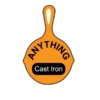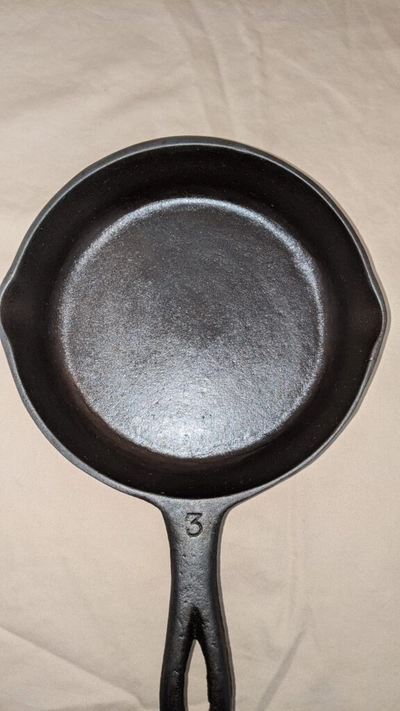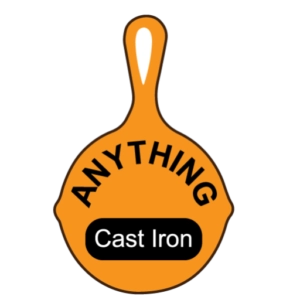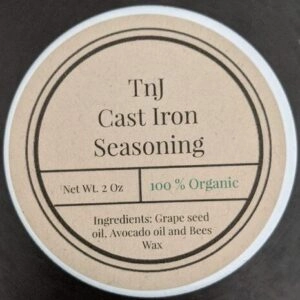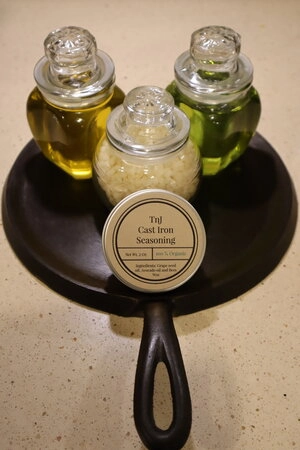Cast Iron is Sticky…
Here is how to fix your sticky cast iron
How to clean a cast-iron pan is a common topic in the kitchen. When it comes to keeping your cast-iron pan non-stick, seasoning is a tried and true method. Heated oils generate a tough coating that protects the skillet’s surface and keeps it from sticking while cooking.
When cooking in a properly seasoned skillet, there should be no sticking. There are a few solutions you can do in your kitchen if the sticking persists after seasoning.
“How do you deal with a sticky skillet after seasoning?”
What is the best way to keep a cast iron skillet from sticking?
If you cook with cast iron skillets in your kitchen, knowing how to season them is crucial. Seasoning cast iron properly helps to maintain the surface of the skillet, resulting in a non-stick coating that not only makes cooking easier but also ensures that your skillet lasts a lifetime!
While re-seasoning cast iron is a must, there are preseason skillets available, such as those from Lodge Cast Iron Cookware, that are ready to use right out of the box.
On cast iron pans, a natural, non-stick surface occurs whenever you cook with oil. When enough heat is provided, oil polymers link together with the iron, resulting in the process.
TnJ’s Cast Iron Seasoning will provide a non-stick surface.
This happens every time you use these skillets to cook with oil or other fats. It’s also a procedure that you should perform on a regular basis.
Cleaning the skillet to remove any black residue, lightly oiling it, and then roasting it at a high temperature in the oven is the most frequent seasoning procedure.
Is it necessary for a skillet to be sticky after seasoning NO?
You may have wondered why your cast iron is still sticky after seasoning.
If you season your cast iron on a regular basis, it should not be sticky when you’re cooking. When you season cast iron, you’ll get a long-lasting coating that prevents food from turning into a sticky residue while you’re cooking.
Use silicone scrubbers to eliminate stickiness; these flat cleaning tools help you keep your cookware in top shape by removing cooked-on food without compromising the seasoning.
Even if you’ve been seasoning your skillet on a regular basis, you can find that it sticks when you start cooking with it. Is your cast iron pan still sticky after it’s been seasoned? This could happen for a variety of reasons.
While oil is necessary for seasoning, using too much when seasoning or cooking might result in a sticky surface. It’s a fine art, and mastering the art of cleaning a stuck iron takes time and practice.
Another typical cause of stickiness is not sufficiently heating the pan before cooking. If you start cooking with cold oil in a chilly skillet, a sticky residue will build soon!
After seasoning, how should a cast-iron skillet look?
It will shine if you know how to clean a sticky cast iron skillet and season it properly. It will also be dark black and silky to the touch.
Cast iron that hasn’t been seasoned will have a harsh appearance and feel. With sufficient seasoning, this can be remedied.
How do you solve a cast-iron seasoning problem?
This raises the dilemma of how to correct improper seasoning. Remove the heat-resistant silicone handles from your pan, such as those found on the Uno Casa cast iron skillet, before beginning the re-seasoning process.
The best method is to scrub with a scrub bud and soapy water. The idea is to use light pressure and keep going until all of the cooked-on food is gone.
After that, re-season the skillet or pan, ensuring sure it’s hot enough so the surface doesn’t become tacky after you’re done. If it becomes tacky, though, you can remove the problem areas by heating it up again.
You may also use kosher salt to scrape your pan before re-seasoning it. I’ve used salt to remove the sticky residue from my Uno Casa pans without harming the flavor – it’s fantastic!
What should I do if my cast iron skillet becomes clogged?
So you’ve seasoned your pans but are still perplexed as to why everything sticks to your cast iron skillet? If things are still sticky, the most likely cause is an accumulation of too much oil residue over time.
Even if you’ve been seasoning the skillet, the oil may not have been properly removed. they’re simple to maintain if you give them an extra clean following each usage.
To fix this, start by giving your skillet a thorough cleaning, which includes scouring any visible residue off with a scourer. Preheat the oven to at least 400 degrees Fahrenheit, then lay the skillet on the top level, face down, after it’s heated enough.
Keep it warm for at least an hour, and the extra oil should have burned off or bound with the iron, resulting in a gleaming new, seasoned sheen.
Is it possible to cook with a slick cast iron skillet?
Cooking with a greasy cast iron pan is a recipe for disaster!
Cooking with a sticky pan will prevent a new layer of protection from building since the oils will not interact properly with the iron surface.
Yes, your food will cook, but it will also adhere to the pan, causing even more residue to accumulate over time. Learn more about black residue on your cast iron skillet by reading this article.
Because the residue isn’t easy to clean off the iron, you’ll have a harder job scouring it off every time you cook on a sticky pan!
You’ll also have an impact on the flavor of the meal you’re preparing, and not just because of the charred residue adhered to the pan.
Seasoning is important because the protective layer it helps to form also guards against rust.
Conclusion
When you use custom blended seasoning without animal fat there is less chance of ending up with sticky cast iron after seasoning. Blended oils are much more forgiving during the seasoning process.
You will still need to make sure as much seasoning has been removed as possible before heating up the skillet. The rule of thumb is to try to wipe ALL of the oil off your cast iron then heat it up.
TnJ’s Cast Iron Seasoning is one of those custom blends that will help even beginners get through the seasoning process with less hassle
Join our private Facebook Group.

Back to home page
